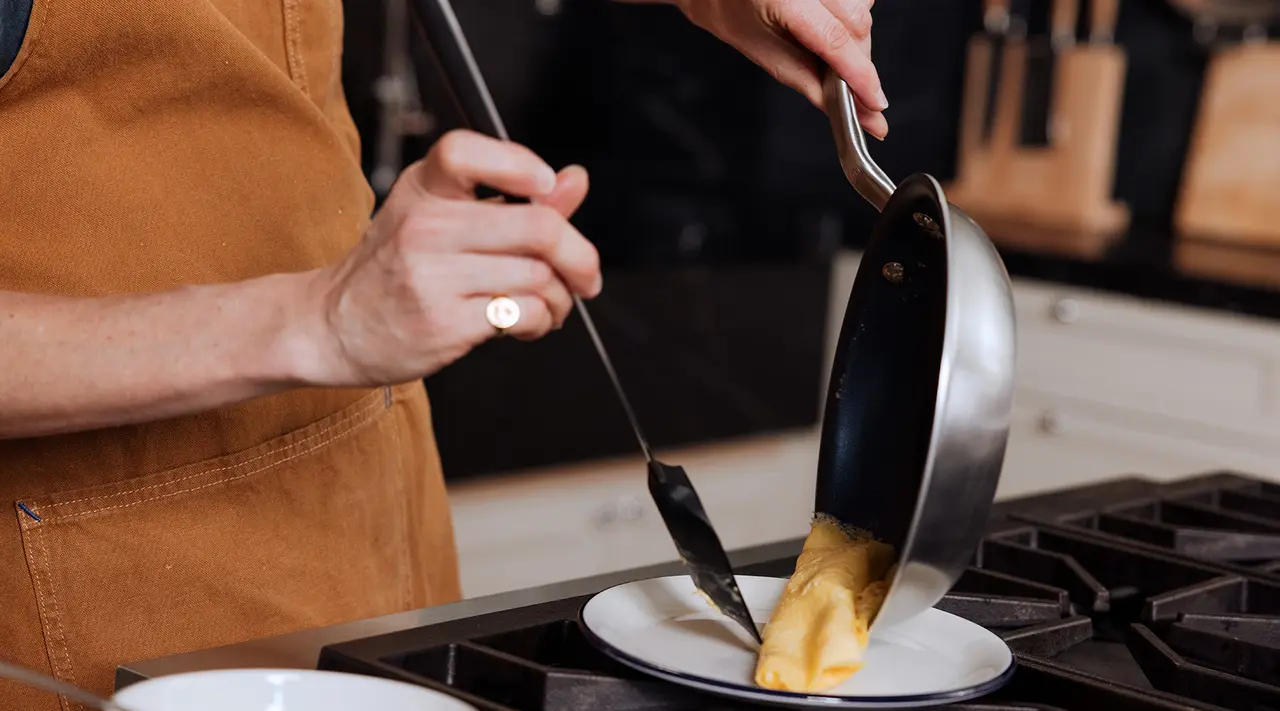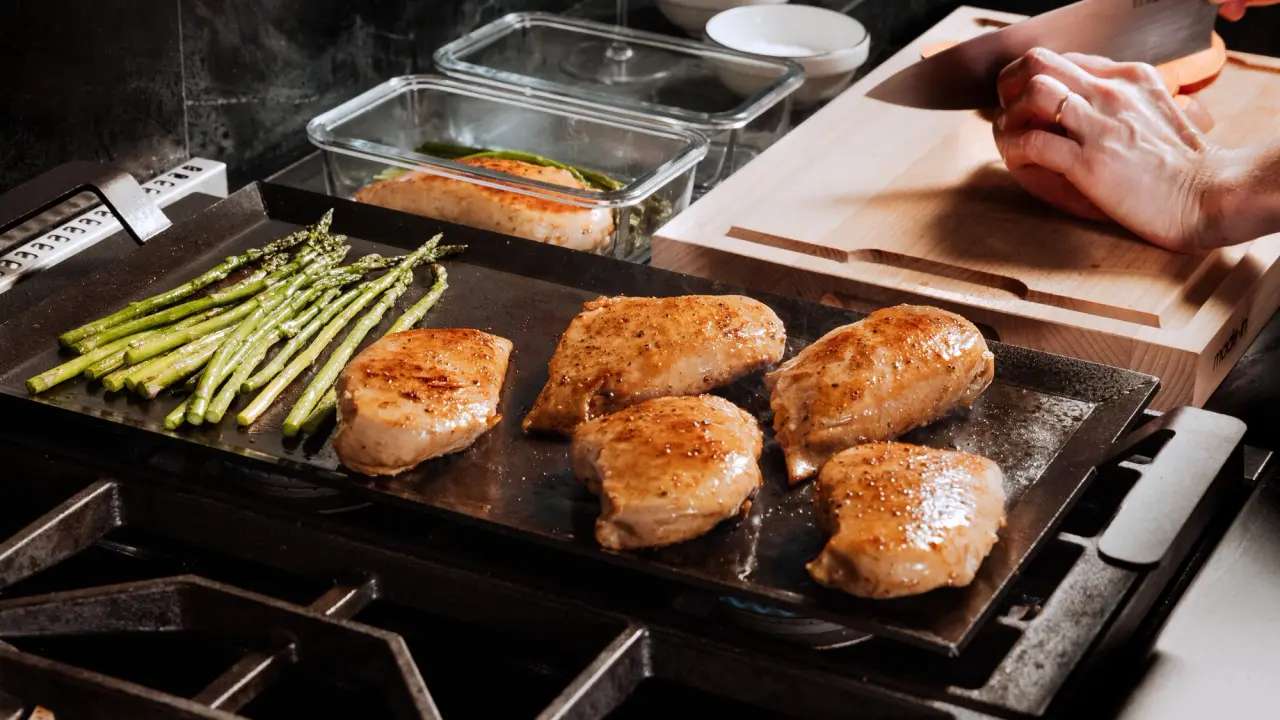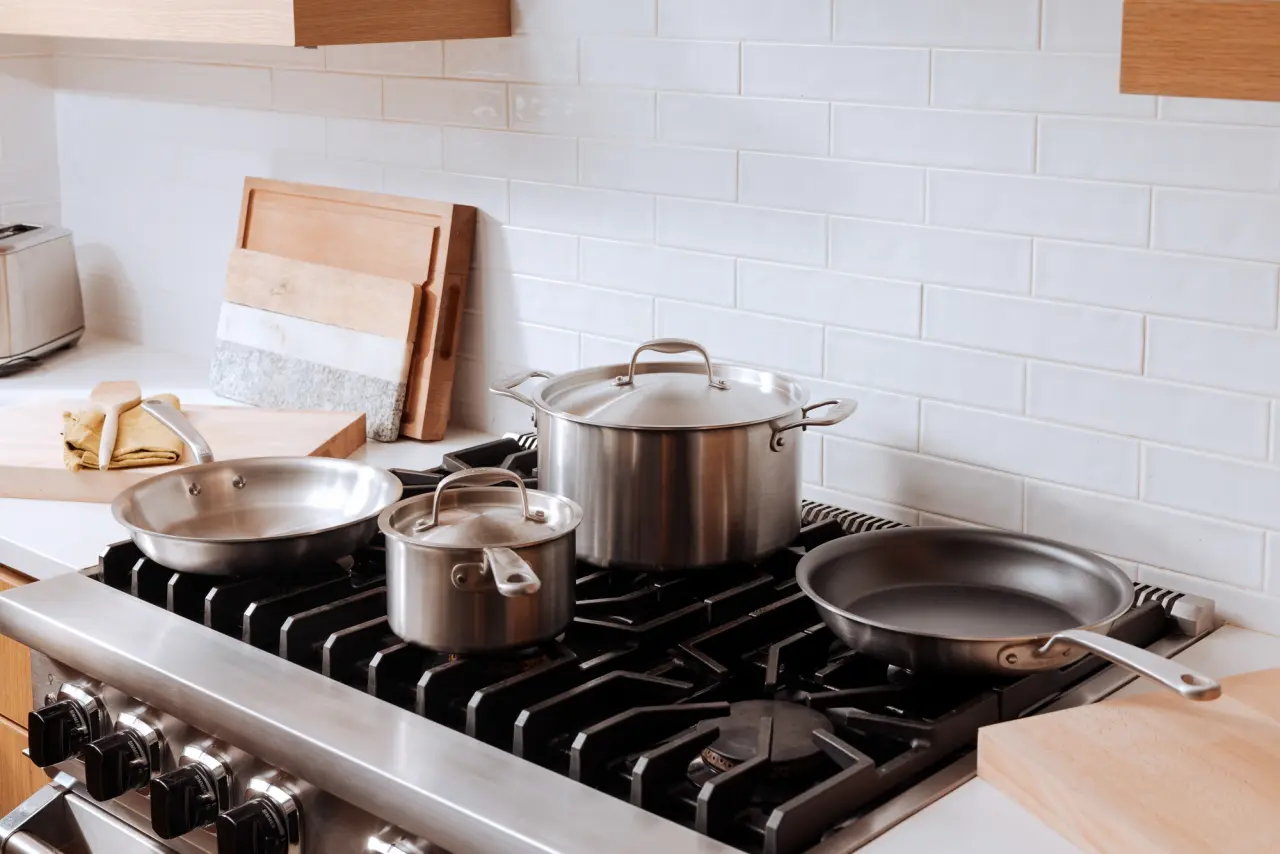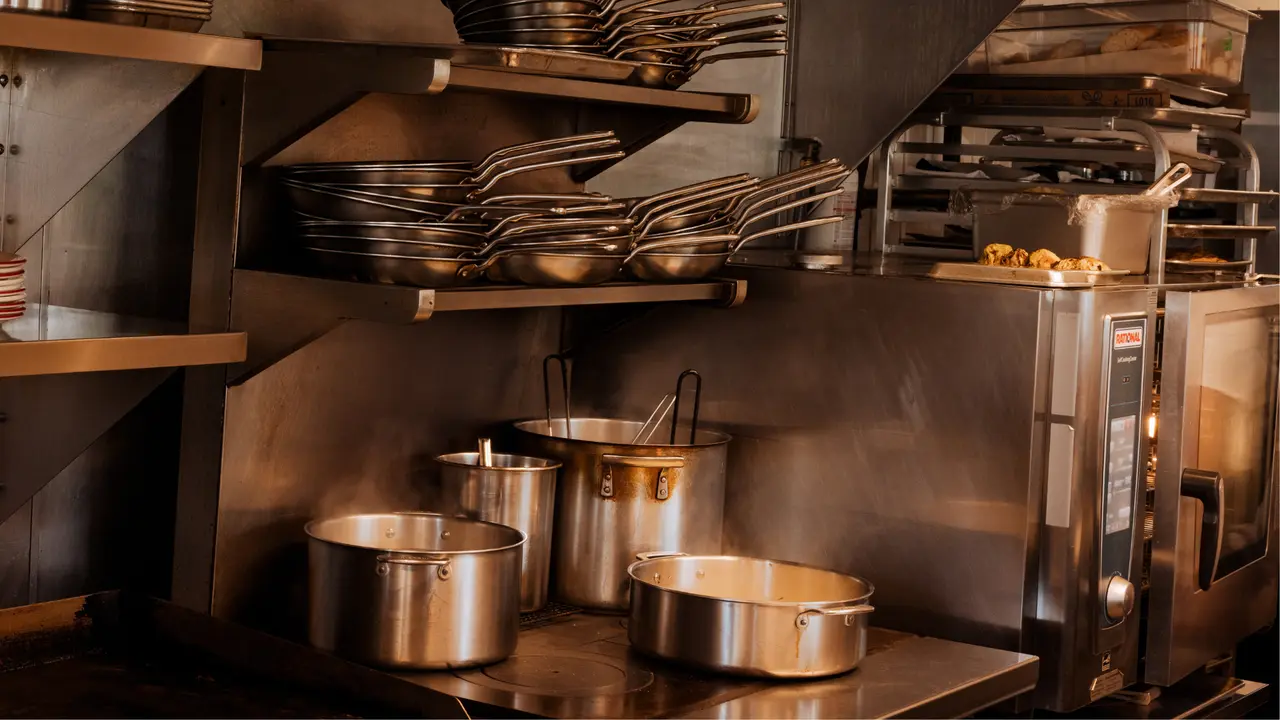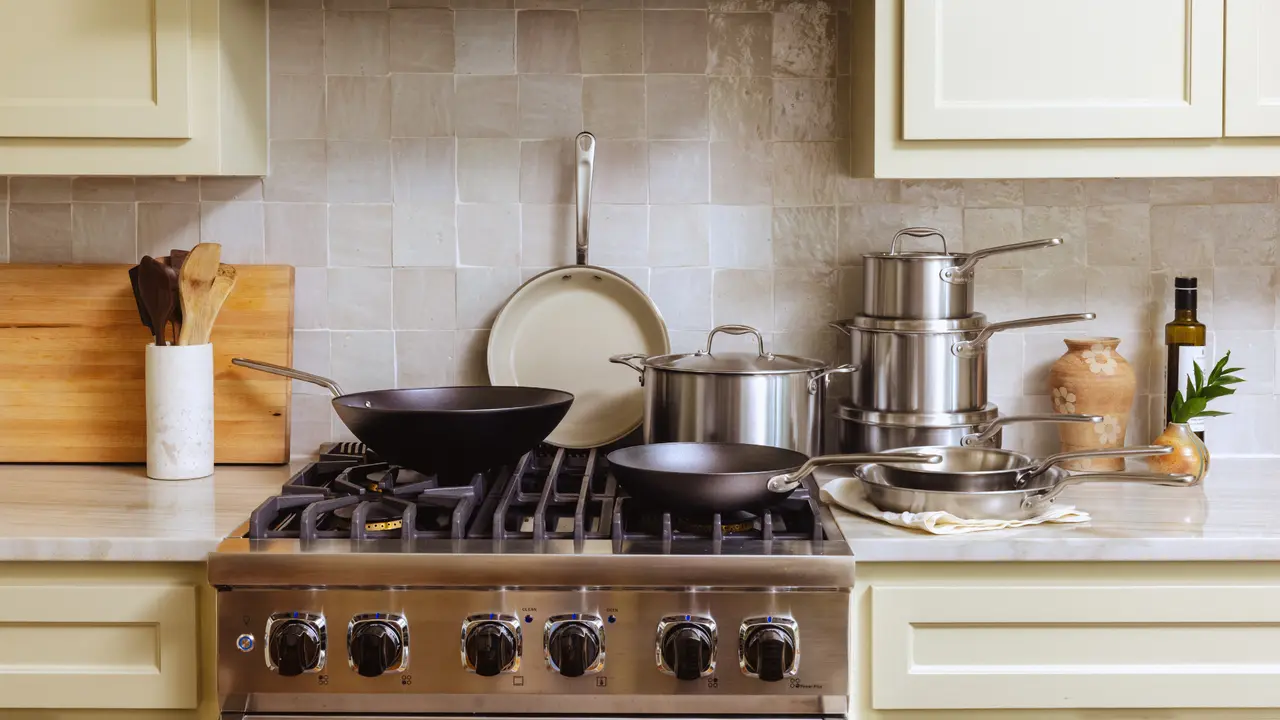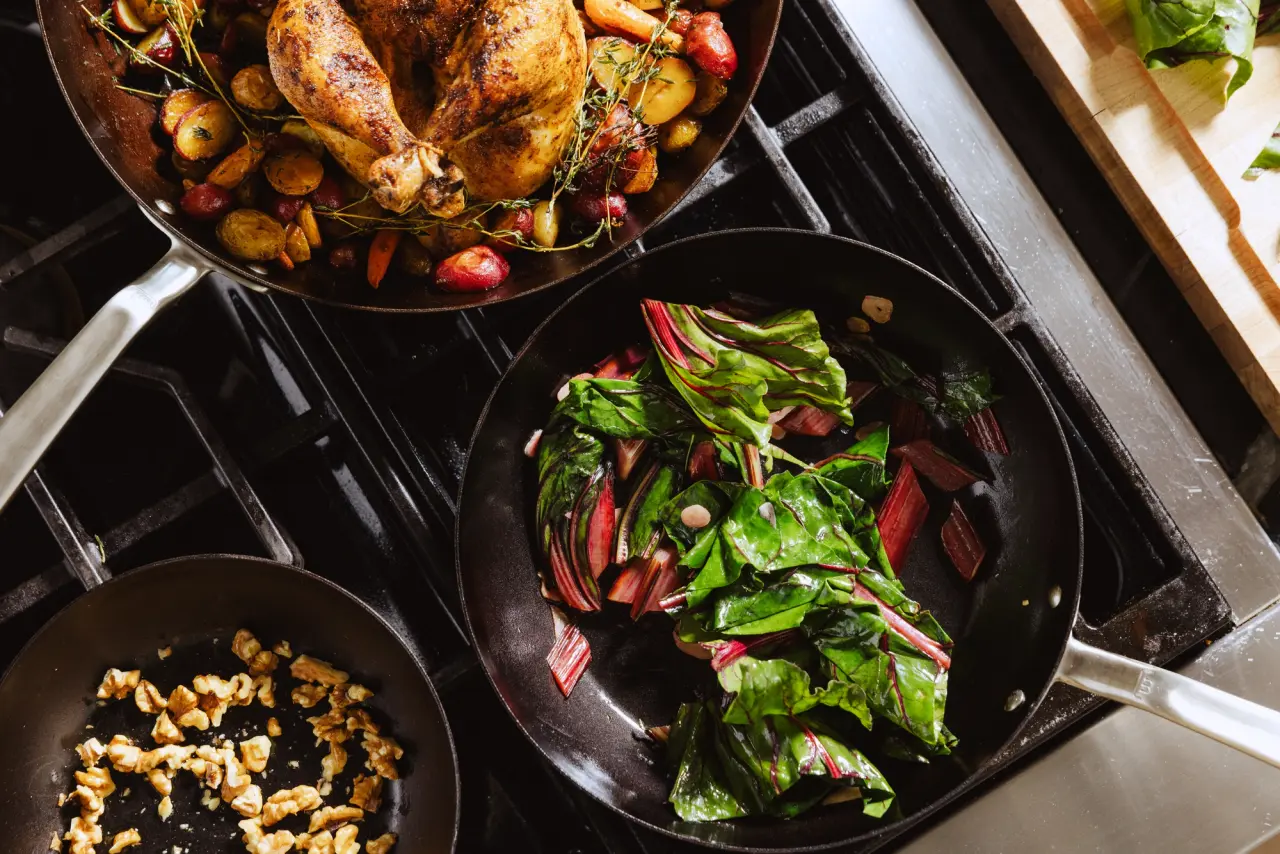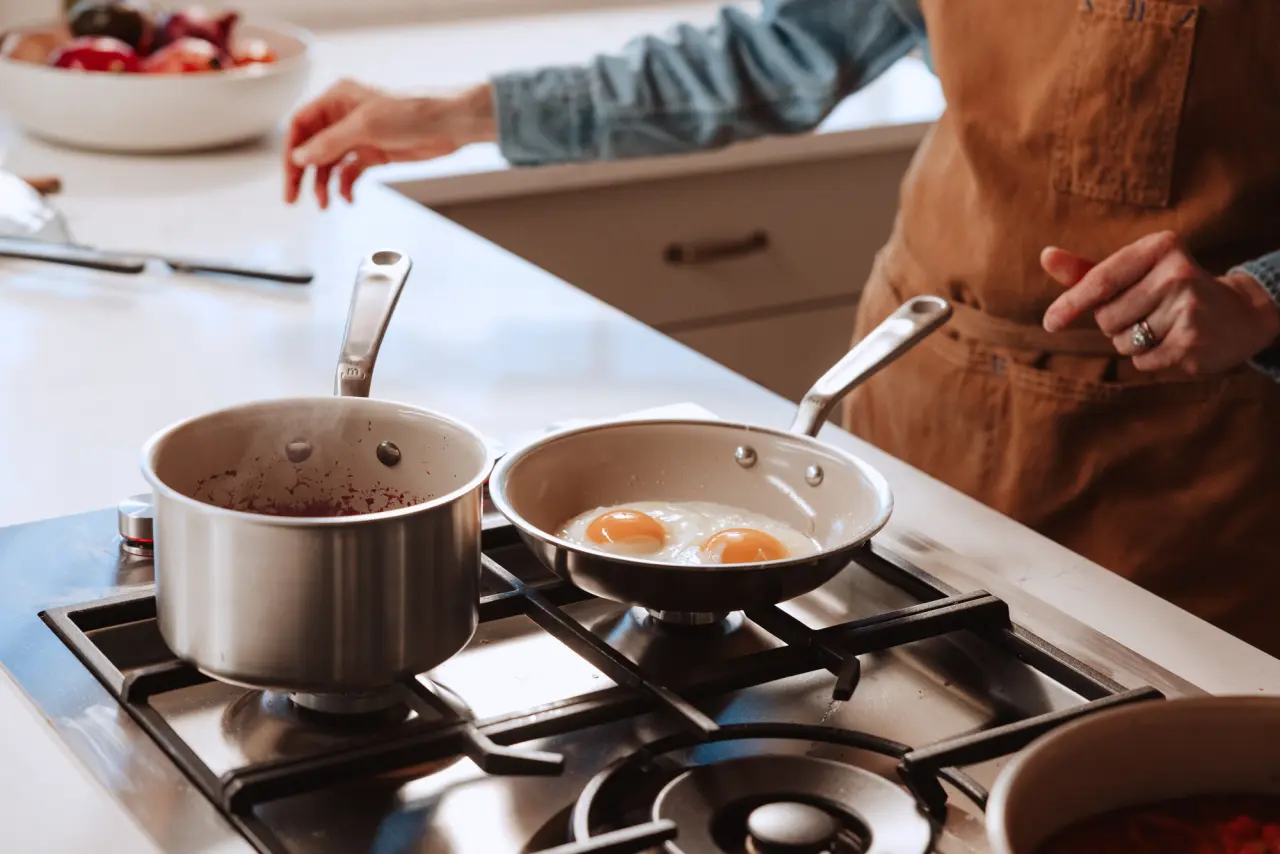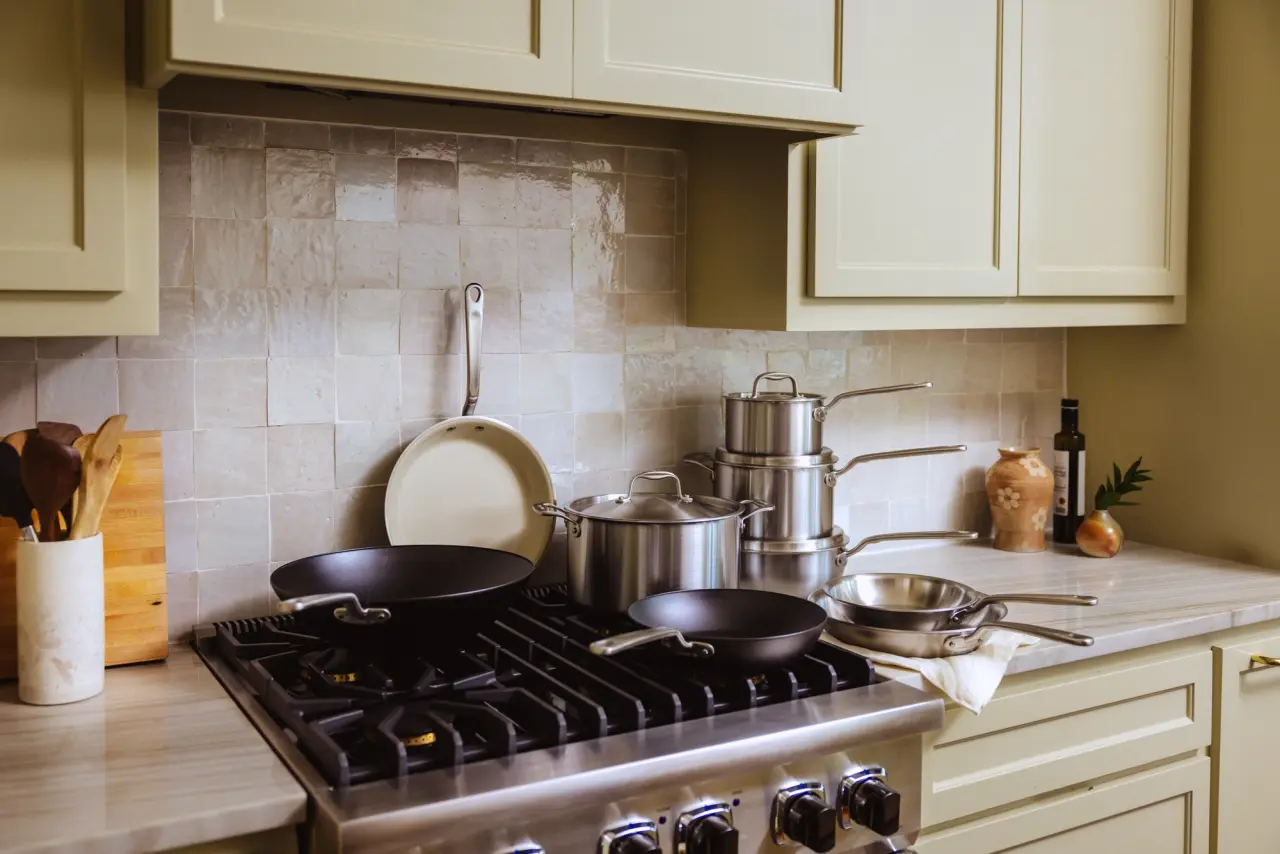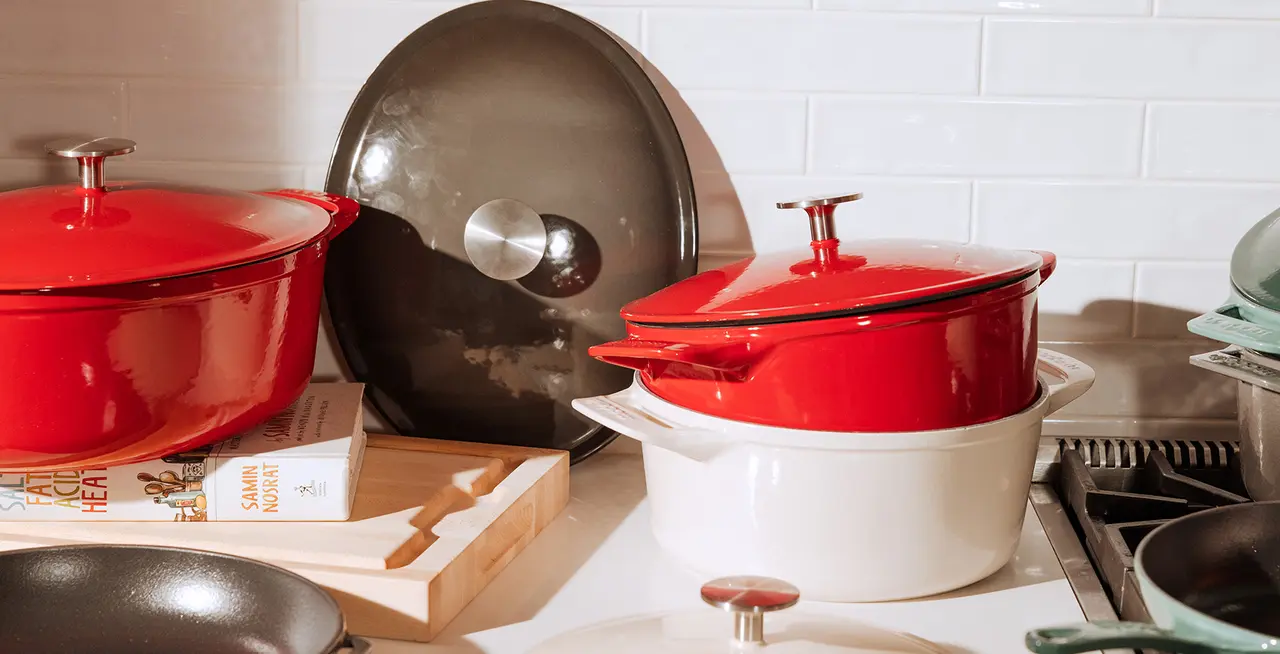The versatility of non stick pans as a go-to kitchen tool is undeniable. Sunny side up eggs slide onto a plate with ease, flipping delicate fish filets (and keeping them intact) is a breeze, and even overflow from a gooey grilled cheese won’t create much of a hassle.
Like all good things, non stick pans do unfortunately wear down with time, use, and cleaning. After a few years, that previously repellant surface may be a little stickier, or you might notice the coating isn't looking as flawless as it was out of the box.
The typical coated non stick pan will have its best days in the first two to three years of use, but its exact lifespan is dependent on the pan’s quality and materials—and how well you take care of it. Let’s get into it.
How Long Do Non Stick Pans Last?

Not all non stick pans are created equal, so they can range in length of life. While most non stick pans last an average of two to three years, pans of a poorer quality may yield fewer uses before the non stick coating wears off. Alternately, higher quality pans may last longer than three years with the right care.
Proper care and maintenance, regular cleaning, and storage that protects the coating will all he;p elongate the lifespan of your non stick pans. When purchasing a new pan, read the accompanying user’s guide for important information like whether the pan is oven safe and what temperature it can safely reach (some non stick, including our ProCoat Collection, can safely reach temperatures higher than 500F, but repeated use at that temperature causes the coating to wear out quickly).
When to Replace Your Non Stick Pans
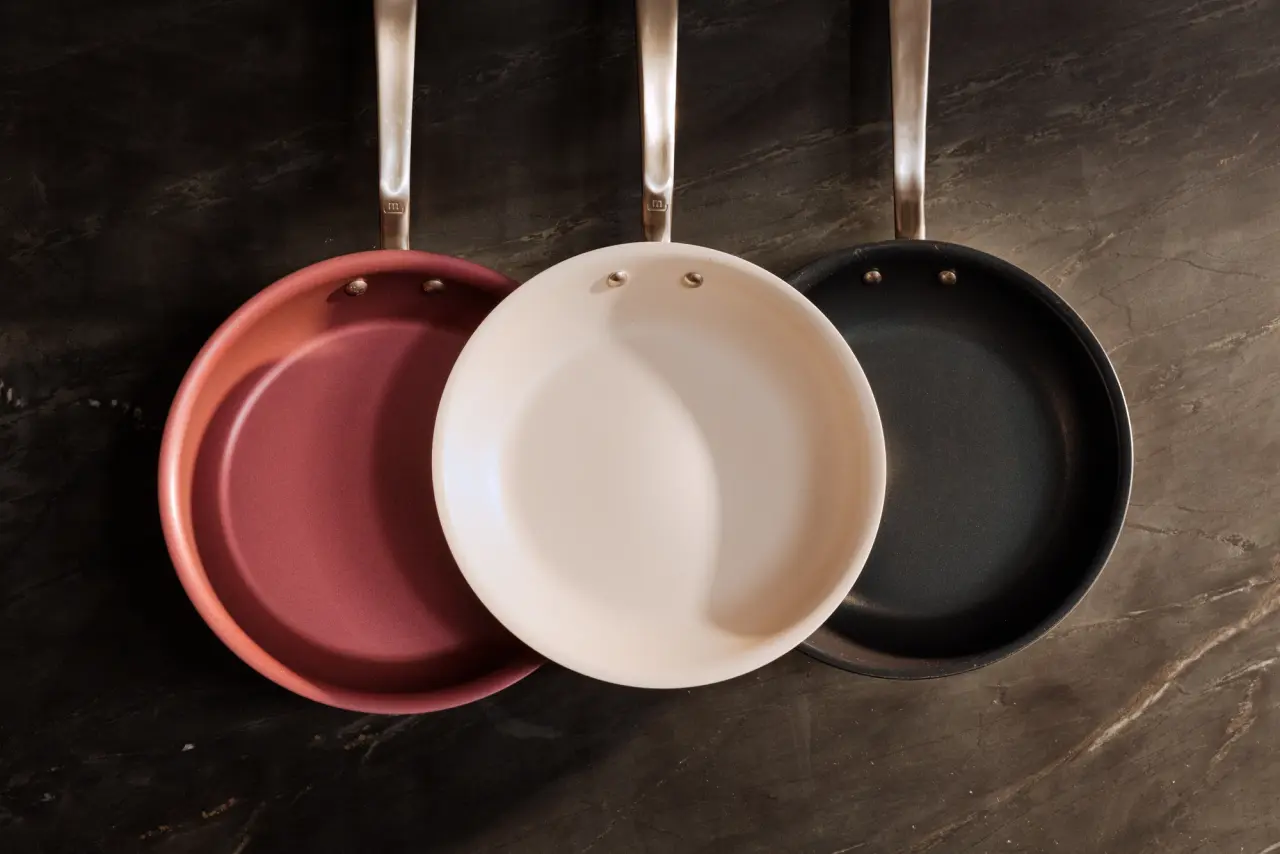
Every non stick pan will eventually start to show their age, whether through food sticking that once slid off without issue or more visible surface problems like scratching, peeling, or warping. Before tossing your pans, it's important to know—when is this just a slight inconvenience and when is it time to start shopping for a new one?
Food Sticking
If food is sticking to a non stick surface, then that surface is, in fact, no longer non stick. It can happen to any pan with time, but happens much quicker with cheaply-produced non stick offerings.
Pans with professional-quality non stick coatings—like our ProCoat Collection—or typically last longer, and minor sticking issues can often be resolved by heating the pan and coating it in a small amount of oil to “seal” the surface (much like the process of seasoning a skillet).
Rust
Because non stick coating by itself doesn’t rust, if you spot rust on a non stick pan that means its coating has worn away to expose the metal beneath. If the coating has worn away to that degree, stop cooking with the pan ASAP and replace it.
Deep Scratches
From time to time, non stick pans will acquire superficial scratches that don’t go away with cleaning, whether from a particularly rough utensil or a scratchy sponge. Most of the time, these superficial scratches don't have an effect on your pan's cooking performance.
But when these scratches expose the metal underneath the non stick surface, it's time to replace your pan. While the scratches themselves typically aren't harmful—aside from marring the surface—they're prime breeding ground for bacteria.
Discoloration
All pans will undergo some discoloration with use—all it means you’re seasoning your food and enjoying well-made meals. But if the pan begins to be deeply discolored and it doesn’t lighten with a wash, the non stick surface is likely compromised and a replacement may be in order.
Peeling Coating
If you notice the non stick coating peeling off of the pan, it’s definitely time to start shopping for a new one—this is a sure sign that the non stick is no longer doing its job.
Warping
There are a few causes of warping in non stick pans, but the main culprit is taking your pan from hot to cold too quickly (otherwise known as thermal shock).
Avoid immediately rinsing a pan off of the stove, as the drastic change in temperature will cause the pan’s expanded, heated molecules to seize under the cold, changing the shape of the pan. If your pan is cheaply made or has a base metal that is on the softer side like aluminum or copper, warping might be more prevalent.
If your pan is warped to the point of not cooking or sitting on the stove evenly, then it's time to treat yourself to a new non stick pan—may we suggest one from our ProCoat Collection?
How to Make Your Pans Last Longer
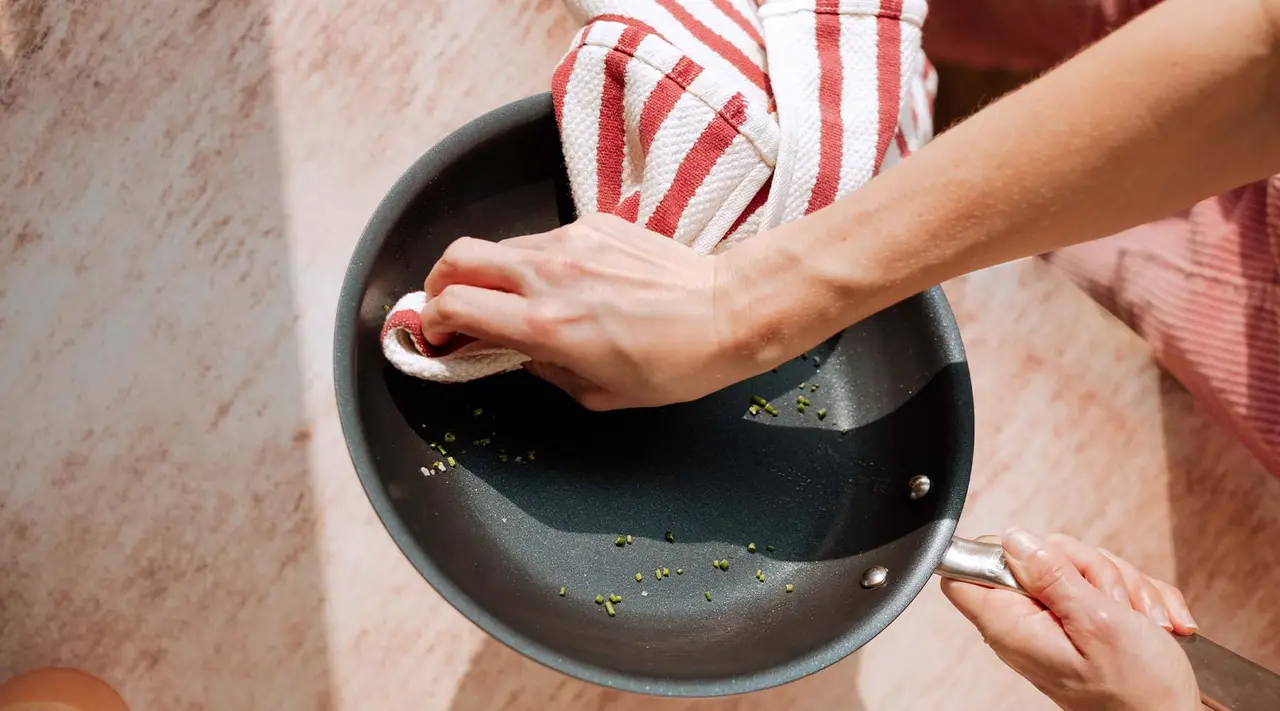
Properly caring for non stick pans will not only help preserve their unique coating, but will also ensure that they last for meal after meal.
Use the Correct Utensils
Think of the non stick coating on your pan like the enamel on your teeth—it’s soft, impermanent, and you want to avoid scraping it off at all costs. One thing that is sure to damage the delicate coating is metal utensils, which is why it’s important to avoid cooking with sharp-edged stainless steel or other metals in non stick cookware, and instead opt for softer materials like wood or silicone.
And don’t cut up or shred food directly in your non stick pan—move your ingredients to a cutting board to keep the non stick coating in place to do its job.
Mind the Heat
Non stick pans can vary in the amount of heat they are capable of withstanding—for instance, some pans are not oven safe or require cooking food on a medium-low temperature.
Make the most of your pan by reading about its heating limitations before putting it to use. Adhering to your specific pan’s heat guidelines will help you keep your pan in tiptop shape—for example, our ProCoat Non Stick pans are usable up to 500F, even in the oven.
Wash Gently and Thoroughly
The longevity of your non stick pan can also depend on your cleaning habits. While many modern pots and pans are technically dishwasher-safe, hand washing your non stick pans with a soft sponge or soft-bristled brush will grant you many more uses. Avoid steel wool or abrasive cleaners, as these will scratch the non stick surface of your pan.
It’s also important to clean non stick pans after every use. Removing food residue shortly after cooking when your pan has cooled will help to maintain those non stick properties.
Store Properly
If you're able to make use of hanging storage, this will ensure that your pan’s surface isn’t scratched while not in use.
If you have a small kitchen and need to store your non stick pan in a cabinet or stacked with other pans, place a Pan Protector, trivet, or kitchen towel on the non stick surface to protect it from bumps and unwanted markings before stacking another pan on top.
Also note that you should never store food in your non stick pan—this could lead to the coating quickly degrading. Instead, store leftovers in a dedicated container.
Opt for High-Quality
It might seem like a splurge to buy a higher-cost non stick pan, but this is really a case of you get what you pay for. In the long run, a higher-quality pan like our 5-ply ProCoat Non Stick Pans will last for more meals, spread heat more evenly for better results, and give you a better bang for your buck.
Ready to Cook?
The proper care and keeping of your non stick pans will guarantee use after use with this wonderful kitchen tool, as will starting with the best quality pan you can find. Get cooking with our ProCoat Non Stick Pans and see the difference professional-quality cookware can make in your kitchen.
